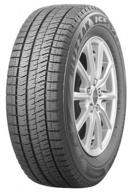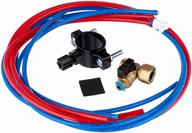
Review on Filmtec 75 GPD Residential Membrane by Mark Clark

Dow/Filmtec makes some of the best reverse osmosis membranes in the industry. I have water 0 TDS
*I have been using Dow/Filmtec 0 TDS reverse osmosis membranes after filtering for ten years and I have attached photos with a TDS meter. I see a lot of negative reviews about a good product and will try to clear up some of the misconceptions in my review. First, Dow/Filmtec is known for making some of the best reverse osmosis membranes in the industry. I can only name one more expensive brand that is slightly better but produces water even more slowly, which frustrates many of the reviewers here. If your goal is to produce clean reverse osmosis water that can have 0 TDS, you can't go wrong with this membrane. I recently ordered a replacement filter after a few years of use and am getting water with 0 TDS which is 0 total dissolved solids. You want SLOW, the higher the bounce rate, the more efficient the filter and the more money you'll save, and I'll explain why. The higher the scrap rate, the longer your DI resin filter will last. The water passes through this reverse osmosis membrane and into your DI receiver, which is the last filter that works best and is the last line of defense against dissolved solids in your water column. When your filter is tuned properly, your TDS will drop to 0. You want the rejection rate to be high, have the least amount of solids entering your DI, retract what is the most costly filter to maintain, and have a rejection rate of 98 % in water contaminant rejection processes causes water to be produced slowly. The next big misconception is not realizing that the filters in front of your membrane are the biggest factor in how long not just that reverse osmosis membrane, but any of them, will last. R/O membranes are resistant to chlorine >0.1 ppm. If chlorine manages to get through your exhausted or poor quality activated carbon filters and reach the membrane, it will be broken down immediately and you can toss the membrane in the bin. Because of this, activated carbon filters require maintenance. I use this membrane to purify water for my reef systems and have a large water tank. The capacity is said to be about 75 gallons in 24 hours. If you live in an area with extremely high TDS the process will be even slower as your filters will have to work harder and won't last as long either. Note that some cities add chloramine, which is ammonia, to tap water as a secondary disinfectant. without the knowledge of the tenants. You will need another carbon filter in your water filtration system to remove. If you can't filter your water properly, check with your city and ask. * If you found this review helpful, please leave a helpful review. It takes a lot of time to write quality reviews with factual information and I do it to help the community.* Thanks, 5 stars for the product - thumbs up!
- Tools and Household Goods
- Miscellaneous Miscellaneous
New products
Comments (0)
Top products in 💧 Water Purification
Another interesting products
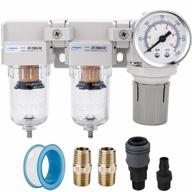
NANPU DFR-02 1/4" NPT Air Drying System - Double Air Filters, Air Pressure Regulator Combo - Semi-Auto Drain, Poly Bowl

20 Review
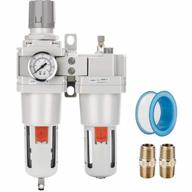
NANPU 1 FRL Air Filter Regulator Lubricator Combo With 0-150 Psi Gauge, 5 Micron Brass Element, Poly Bowl & Semi-Auto Drain - Metal Bracket Included

20 Review
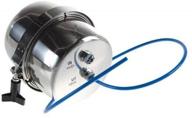
Filter under the sink Aquaphor Favorit ECO silver

20 Review
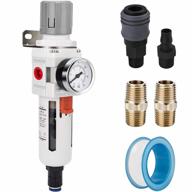
🔧 NANPU 1/2" NPT Compressed Air Filter Regulator Combo Piggyback with Auto Drain, 5 Micron Brass Element, Poly Bowl, Metal Bracket, and 0-150 psi Gauge

18 Review


